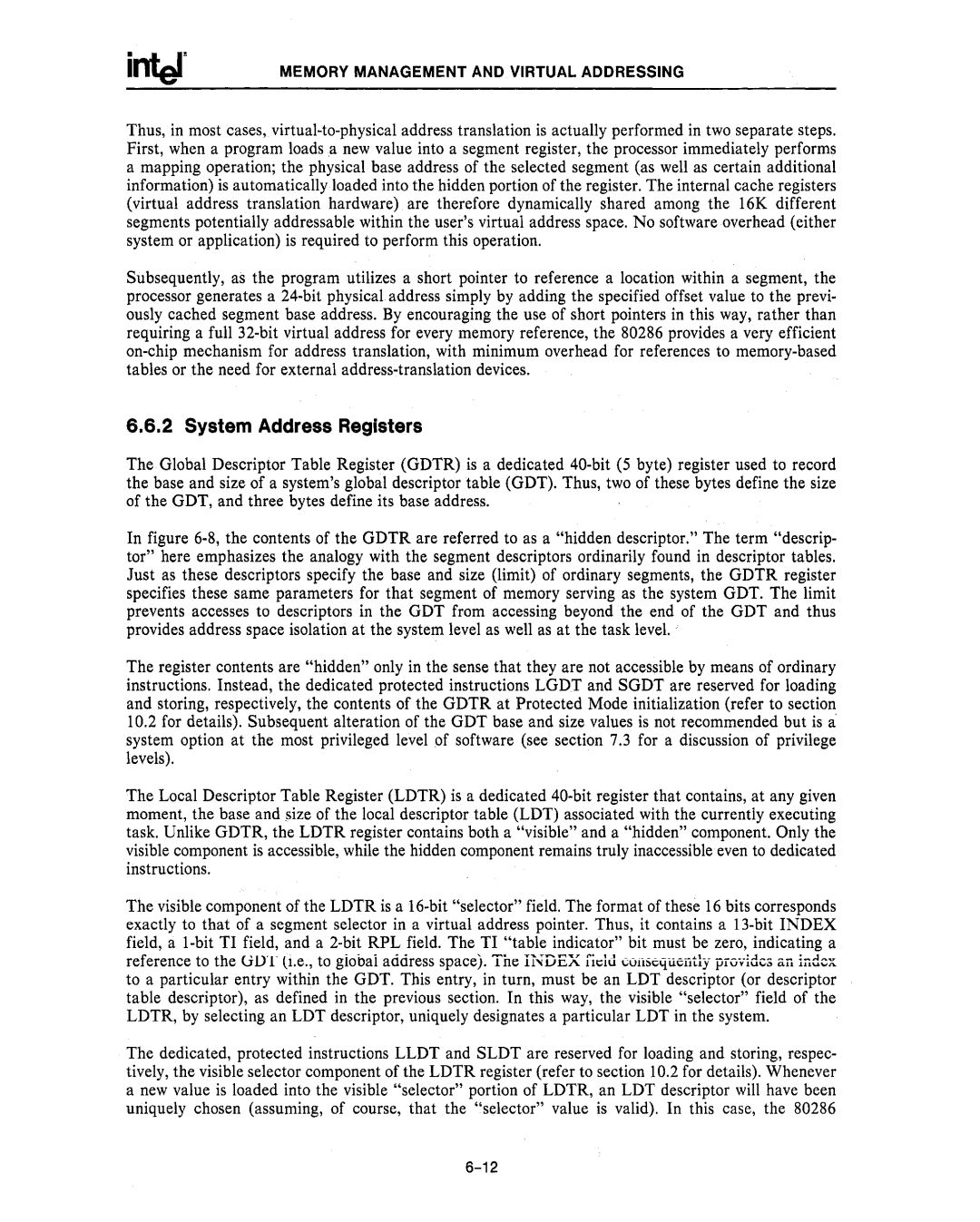
MEMORY MANAGEMENT AND VIRTUAL ADDRESSING
Thus, in most cases,
Subsequently, as the program utilizes a short pointer to reference a location within a segment, the processor generates a
6.6.2 System Address Registers
The Global Descriptor Table Register (GDTR) is a dedicated
In figure
The register contents are "hidden" only in the sense that they are not accessible by means of ordinary instructions. Instead, the dedicated protected instructions LGDT and SGDT are reserved for loading and storing, respectively, the contents of the GDTR at Protected Mode initialization (refer to section
10.2for details). Subsequent alteration of the GDT base and size values is not recommended but is a system option at the most privileged level of software (see section 7.3 for a discussion of privilege levels).
The Local Descriptor Table Register (LDTR) is a dedicated
The visible component of the LDTR is a
The dedicated, protected instructions LLDT and SLDT are reserved for loading and storing, respec- tively, the visible selector component of the LDTR register (refer to section 10.2 for details). Whenever a new value is loaded into the visible "selector" portion of LDTR, an LDT descriptor will have been uniquely chosen (assuming, of course, that the "selector" value is valid). In this case, the 80286
